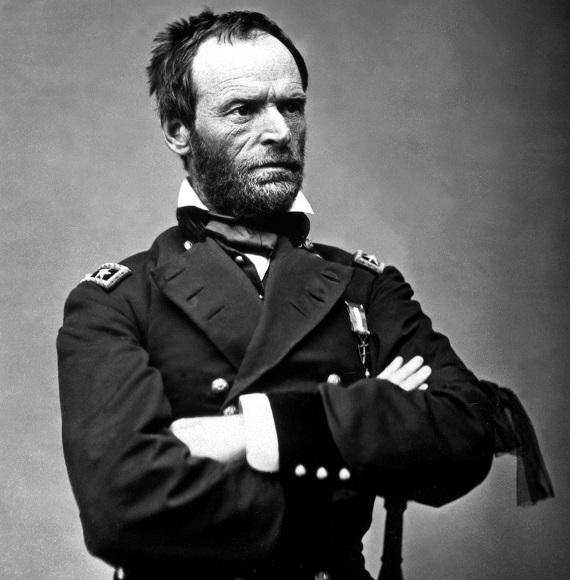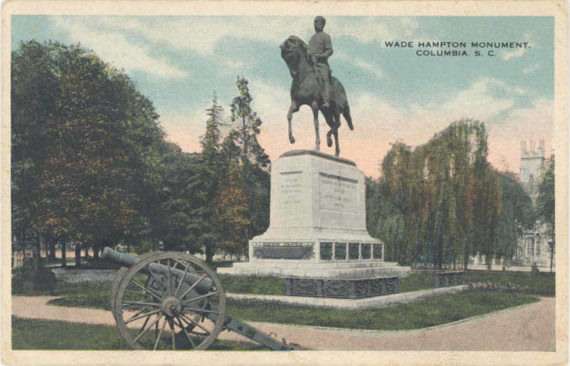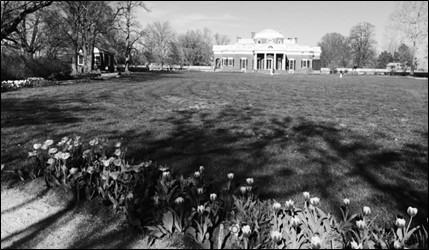It has evidently taken a hundred and sixty years for some people to realize that Abraham Lincoln’s War was waged not for the slave but against his master, who had been the stumbling block for Northern ambitions for an unconstitutionally powerful central government ever since the days of Thomas Jefferson.
With the election of Lincoln and his strictly sectional Northern political party, their political ambitions were on the verge of being realized, but their financial ambitions were met with the threat of disaster when the Southern States withdrew from the Union. Cotton was “King” in those days, and the industrializing North depended on it for their textile mills. With the “Cotton Kingdom” out of the Union and free trading with Europe, the North’s “Mercantile Kingdom” would collapse, so Lincoln launched his war to drive the South back into the Union at the point of the bayonet. But how were the Radicals of his party to save the cotton and at the same time get rid of the Southern Planter and his politics that were the stumbling block to their political ambitions for power?
According to the rare book “Why Lincoln was Murdered,” by Otto Eisenscheml, the plan was as follows:
1) Let the war go on until emancipation of the slaves became effected. This would ruin the planter, but plenty of cotton could still be had from impoverished sharecroppers – both Black and White.
2) After the war was won, enfranchise the Southern (but not Northern) Blacks and disfranchise the Southern Whites.
3) Use the Union League to teach the freedmen to hate “Ole Marster” and vote for the carpetbaggers to give the Northern political party the electoral votes of the Southern States – and the political power they coveted.
The only threat to their plan was Lincoln’s proposed leniency towards the defeated South, but John Wilkes Booth took care of that problem for them. His successor, Andrew Johnson, threatened their plan also with pardons for ex-Confederates, and they impeached him for it. Then, once their plan had been successfully accomplished, they abandoned their Black puppets to the upheaval they had wrought in Southern society and turned their attentions to the Plains Indians, who were in the way of their transcontinental railroads.
Results? For the Blacks, according to Freedmen’s Bureau and other records – and Jim Downs’ book “Sick from Freedom” – between 1862 and 1870 as many as one million freedmen – deprived of the cradle-to-grave care provided by their masters – died or became seriously ill from starvation, neglect, and epidemics under the care of their “liberators.” In the Hampton Roads Conference in early 1865, Confederate Vice-President Alexander Stevens asked Lincoln what he proposed to do for the care of the freed slaves. He said to let them “root, hog, or die.” One quarter of the Black population did, which was more than the total deaths of soldiers in the war.
The article in the Free Press quotes General Sherman as recording large numbers of freed slaves following his army through Georgia. It does not mention his cutting loose his pontoon bridge across Ebenezer Creek to prevent them from following him. It also does not mention that Sherman refused to have Black troop units serve in his army. Therefore, it might seem that his order giving confiscated land to the freedmen of the Sea Islands was less for his altruism towards the Blacks than for his vindictive destruction of the Southern Planter. His subsequent total destruction of South Carolina would add credence to this.
One can cherry-pick exceptions to the rule, but the upshot of Reconstruction was that the carpetbaggers got the forty acres, nobody got the mule, and the Northern political party gamboled in the “Guilded Age” for the rest of the century.







An excellent article. The North had one goal, to gain control of cotton production. Bear in mind that after the war, hundreds of Northern textile producers went south and bought up cotton lands so they could produce their own cotton. Moreover, what historians brush over is that many of the large plantations, particularly those in Mississippi, were owned by wealthy Northerners.
Nice work, Mr. Traywick,
It’s difficult sometimes to get this through the misinformed, deep-rooted neocons (nationalists). There is no hope for the progressive leftist.
Thank you for summing it all so concisely and clearly. I will print several copies to hand out as needed. I live amongst do-gooder damnyankeess now, in the Hudson River Valley (yes, I will accept your “God bless yous”) but grew up in South Carolina. My Grandaddy who grew up in Dunbarton South Carolina (no longer exists as now it is the Savannah River Site “bomb plant”) took me out to the piney woods one day to show me where a church had once stood. It was no longer there after Sherman came through. Truth does prevail. I have been searching for this article for 40 years. Thank you!!
Every stripe on the US flag represents a slave State. No yankee State ever freed a slave. The first to prohibit slavery was PA…it took them 4 years to do so, allowing plenty of time to sell stock down the river. In 1840, PA disenfranchised the few blacks who had managed to remain in PA. I suppose two percent black population was threatening to overwhelm the Whites in PA.
There was no need for black, malarial-resistant labor in the northern States…there were plenty of White slaves to go around.
If only the yankees hadn’t passed the Corwin Amendment and sent it to the union States (minus the 7 Cotton States), the yankees could hold high moral ground (if we ignore blacks not being allowed to live in Oregon or move to Illinois)…but since everything they ever did was for the money, their intentions are glaringly obvious.
It was far cheaper to hire the freed slave than to keep them up. You could pay them to work when you needed work but let them take care of themselves the rest of the time.
Currently at Ft. Monroe, the lesson authorities there are trying to bring up for contemplation and public discussion is the so-called “Contraband Act,” of May 1861.
Some people say Lincoln wasn’t murdered but executed. What comes at ournd goes around…